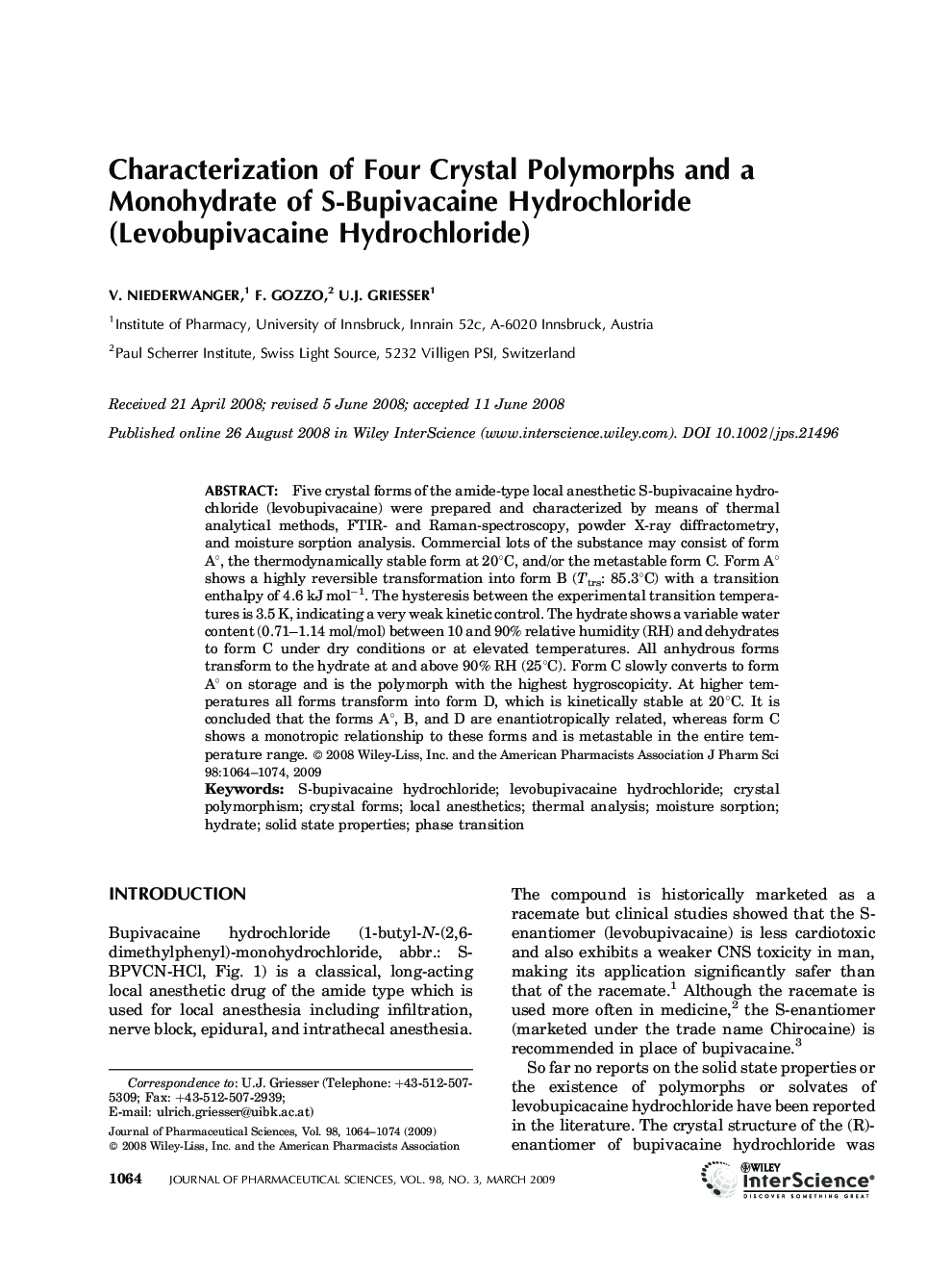| Article ID | Journal | Published Year | Pages | File Type |
|---|---|---|---|---|
| 2486716 | Journal of Pharmaceutical Sciences | 2009 | 11 Pages |
Abstract
Five crystal forms of the amide-type local anesthetic S-bupivacaine hydrochloride (levobupivacaine) were prepared and characterized by means of thermal analytical methods, FTIR- and Raman-spectroscopy, powder X-ray diffractometry, and moisture sorption analysis. Commercial lots of the substance may consist of form A°, the thermodynamically stable form at 20°C, and/or the metastable form C. Form A° shows a highly reversible transformation into form B (Ttrs: 85.3°C) with a transition enthalpy of 4.6 kJ molâ1. The hysteresis between the experimental transition temperatures is 3.5 K, indicating a very weak kinetic control. The hydrate shows a variable water content (0.71-1.14 mol/mol) between 10% and 90% relative humidity (RH) and dehydrates to form C under dry conditions or at elevated temperatures. All anhydrous forms transform to the hydrate at and above 90% RH (25°C). Form C slowly converts to form A° on storage and is the polymorph with the highest hygroscopicity. At higher temperatures all forms transform into form D, which is kinetically stable at 20°C. It is concluded that the forms A°, B, and D are enantiotropically related, whereas form C shows a monotropic relationship to these forms and is metastable in the entire temperature range.
Keywords
Related Topics
Health Sciences
Pharmacology, Toxicology and Pharmaceutical Science
Drug Discovery
Authors
V. Niederwanger, F. Gozzo, U.J. Griesser,
